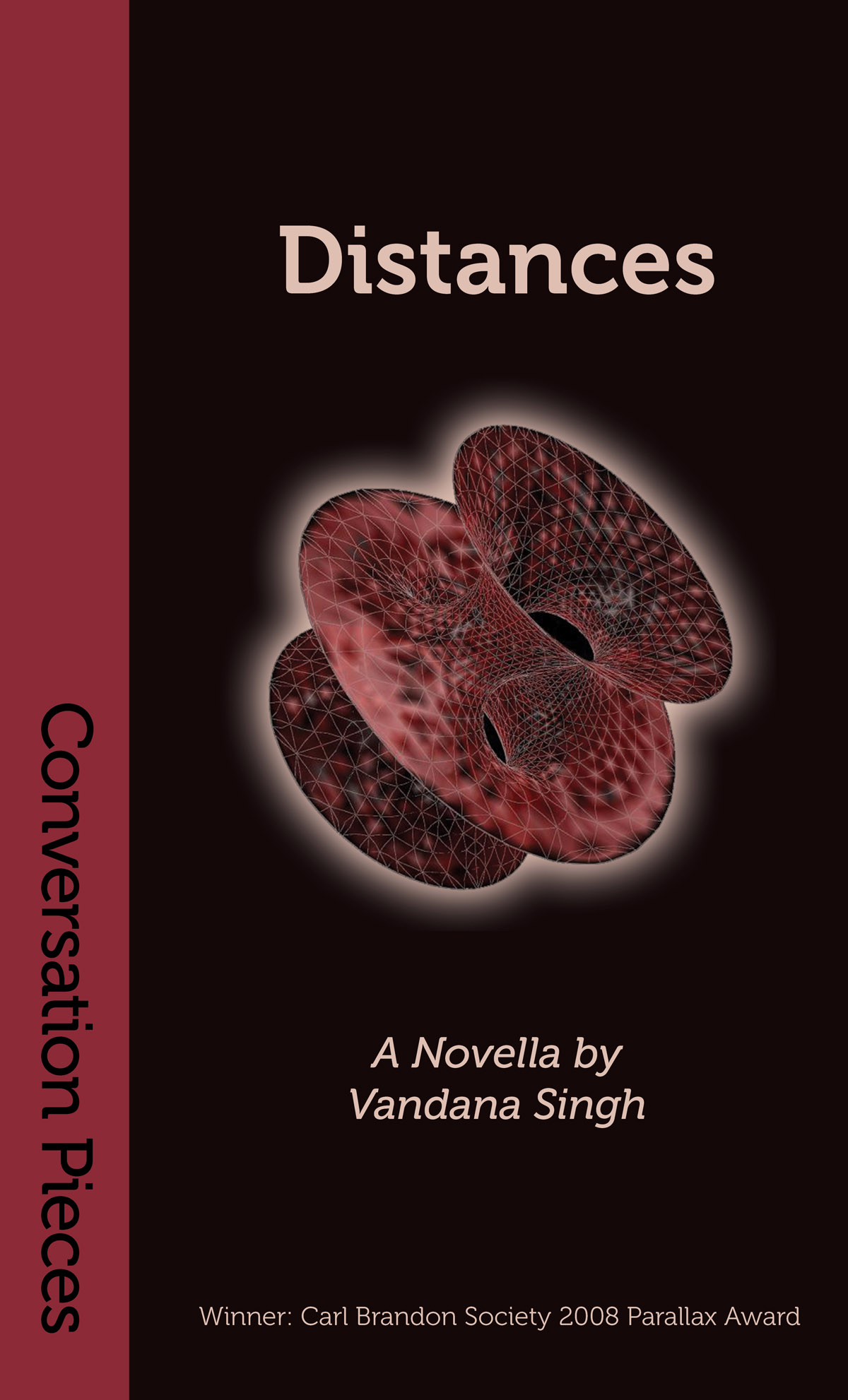 $12 $10.00 (paperback) | |
|
| $5.95 (e-book) |
EPUB
 |
MOBI
 |
Read a sample from the book.
winner of the 2008 Carl Brandon Society Parallax Award
Honor List for 2009 James Tiptree, Jr. Award
She was a rider like no other.... Floating in the amnion, she entered
unmapped territory; she was a speck, a ship lost in vastness, a rider on
waves of maxima and minima, an explorer of a space that, but for her, would
remain only guessed at. She entered this mathematical country as an
explorer would enter a new land: she looked for singularities, skated over
manifolds, sketched out the abstract, mountainous terrain of bizarre
mathematical functions; she sought branch points and branch cuts and hidden
territories bearing algebraic surprises. She took the esoteric world of
the sthanas and made it her reality
Distances, a story of science, art, and deception, is fascinating
far-future science fiction, set in a far-future desert city. For Anasuya,
mathematics was experiential, a sixth sense that bared before her the
harmonies, natural and artificial, that formed the sub-text of the
world. So when mathematicians from the planet Tirana,
18-light-years-distant, ask Anasuya's help in solving a series of
equations, she finds the new geometrical space they present her with
intriguing. But as she explores the new space, she soon comes to suspect
that it represents an actual physical system, and that the equations she is
being asked to solve have a significance the Tiranis are concealing
Reviews
"Intensely and lyrically written, this is the story of a woman named Anasuya
who lives near the ocean on a world not unlike Earth. Her culture is
fascinating and allows for special attributes called athmis. Anasuya's
athmis is the understanding of mathematical harmonies. She sees and
experiences all the mathematical underpinnings of the world .... Individual
sections illuminate and provide a rounded backdrop to the whole, until by
the end of this finely layered novella I felt as though I had met a fully
formed human being—not to mention a number of fascinating
characters—and all with a mathematical conundrum of epic proportions
with dire import for the cultures of two planets."
(read the whole review)
— Bob Blough,
Tangent Online July 8, 2009
"It's an absorbing tale, if perhaps one that doesn't quite earn all its
length, but what I want to highlight here is how beautifully apt its title
is, not just because of the many distances that are worked into the
narrative — geographic, intellectual, emotional, societal — but
because of the way the abstract notion of distance is seen as an integral
part of human existence. Distances, in other words, lend Anasuya's society
its sense of completeness; and indeed, perhaps the most satisfying thing
about Distances is how irreducible it feels, how Singh mixes mathematical,
artistic and sociocultural speculation in a way that feels holistic
precisely because it is aware of where those different domains intersect
and interact. The distances in The Woman Who Thought She Was A Planet are
more familiar; and the speculations are smaller, if not more tame; but for
Singh's characters, the negotiation of the two is usually no less
challenging."
(read the whole review)
— Niall Harrison, Torque Control
"...a long novella mixing mathematics, gender issues, and an exotic look at
human colonization of the galaxy. Echoing Le Guin to some extent, Singh
follows Anasuya, who has a visceral ability to understand mathematics, as
she helps visitors from a distant planet... It's a complex setup, hinting
at quite a fascinating galactic backstory
— Rich Horton, Locus, March, 2009
ISBN: 978-1-933500-26-3 (13 digit)
Publication Date: Dec 2008
paperback 154 pages
|





